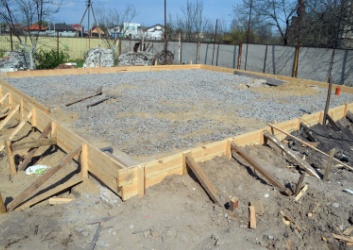
Critical Scaffold Safety Tips to Avoid Disaster
As a construction professional, your responsibilities involve managing complex projects,

Scaffolding, a temporary structure used during construction, has become ubiquitous in cities and job sites around the world. As a critical tool for workers in the building trade, scaffolding allows access to heights that would otherwise be impossible to reach. From the iconic scaffolded dome of St. Paul’s Cathedral in London to high-rise construction in New York, scaffolding has enabled some of the greatest architectural and engineering feats of human achievement.
The techniques and designs originated in Europe hundreds of years ago and have since spread globally. The earliest known scaffolding history dates back to ancient Egypt, Greece, and Rome, using wooden poles and planks. The industry grew rapidly during the Industrial Revolution, with new steel and prefabricated components enabling larger structures. Today, scaffolding companies operate internationally, transporting scaffolding components and sharing innovative new designs across continents.
The Scaffolding has been used in construction for centuries, originating in Europe during the era of Gothic architecture. As buildings became more elaborate, scaffolding allowed stonemasons and other workers to access high, difficult areas. The earliest scaffolding was simple wooden poles, planks, and ropes.
By the 19th century, scaffolding became more sophisticated. Metal pipes and joints were introduced, allowing for stronger and more versatile structures. These new materials led to the development of frame scaffolding, still commonly used today. Frame scaffolding uses prefabricated frames, braces, and platforms that can be assembled on site. This modular system made scaffolding easier to construct, more stable, and capable of reaching greater heights.
Modern scaffolding is integral to construction projects around the world. In addition to providing access for workers and materials, it helps ensure safety at elevated work sites. Strict regulations and standards govern the design, installation, and use of scaffolding. Advancements in lightweight metals like aluminum have made scaffolding more portable and economical. Newer scaffolding types like tube and clamp, cup lock, and system scaffolding offer innovative, efficient designs.
While the basic principles of scaffolding remain unchanged, modern materials and engineering have vastly improved this essential construction tool. Scaffolding has enabled some of the greatest architectural and engineering feats in human history, from Gothic cathedrals to skyscrapers. As long as we continue to build upwards, scaffolding will remain fundamental to construction. Its importance, like the structures it helps create, is towering.
As the Industrial Revolution gained momentum in the 19th century, new building techniques emerged in Europe that allowed for more ambitious architectural projects. One such development was the widespread adoption of scaffolding. Initially used in shipbuilding, scaffolding was soon employed for construction and renovation of buildings and bridges.
European immigrants brought scaffolding techniques across the Atlantic to North America in the 1800s. As cities grew rapidly, the need for scaffolding America rose, efficient and cost-effective building methods led to the quick adoption of scaffolding.
Some key factors that enabled the spread of scaffolding in North America:
In summary, the availability of materials and expertise, demand for large buildings, versatile and modular designs, and improved safety features enabled scaffolding to flourish in North America. This transformative technology was essential for the development of modern cities in the 19th and 20th centuries.
Methods of Scaffolding and materials differ between Europe scaffolding and North America due to variances in building standards, safety regulations, and available materials.
| Scaffolding Europe | Scaffolding America |
| Construction standards in Europe emphasize minimalism, efficiency, and environmental sustainability. | Building standards in North America focus more on functionality and cost-effectiveness. |
| Scaffolding is highly regulated to maximize worker safety, especially in historic city centers where many buildings are close together | Safety regulations for scaffolding exist but are less stringent than in Europe. |
| Common standards across the European Union aim for interoperability of components between countries | There is little standardization between the U.S. and Canada, so components are not necessarily interchangeable across borders. |
| Scaffolding Europe | Scaffolding America |
| Galvanized steel is the most common scaffolding material used in Europe due to its durability, reusability, and resistance to weathering | Galvanized steel dominates in urban high-rise construction, but wood, aluminum and fiberglass are more prevalent for smaller residential and commercial projects |
| Aluminum alloys are also popular for their lightweight, anticorrosive properties | Fiberglass is a popular, non-conductive alternative, but more expensive |
| Wood was historically used but is now rare due to flammability concerns and environmental regulations. | Wood and aluminum are cheaper and easier to transport than steel |
The scaffolding industry has seen tremendous growth and changes over the past several decades. Here are the innovation in scaffolding industry
Advancements in robotics and automation will streamline scaffolding assembly and disassembly. Robotic arms and drones can erect and dismantle scaffolding more efficiently and safely than human workers alone. Automated systems can also monitor the structural integrity of scaffolding in real time using sensors and AI. These technologies will make scaffolding safer, faster to install and remove, and less labor-intensive.
Scaffolding materials continue to become lighter, stronger, and more durable. Carbon fiber composites, high-strength steel alloys, and aluminum alloys can reduce the overall weight of scaffolding structures while maintaining safety standards. New connector and bracing materials also make scaffolding systems easier to assemble and disassemble. These material innovations will allow scaffolding to reach even greater heights and widths safely.
The global construction market is expanding into developing countries in Asia, Africa, and South America. As these regions invest in infrastructure and building projects, the demand for scaffolding systems will rise globally from Europe to North America. Exporting knowledge and expertise in scaffolding along with the equipment itself to emerging markets will drive industry growth worldwide. International safety and quality standards for scaffolding may also spread to create a more globally integrated market.
Scaffolding techniques have been used for centuries around the globe, evolving alongside architectural and construction practices. From the basic wooden frames used in ancient Egypt to the high-tech modular systems of today, scaffolding has been crucial for the realization of ambitious building projects. Whether made of bamboo, steel, or aluminum, whether fixed or mobile, scaffolding allows workers to reach heights that would otherwise be impossible. Scaffolding is a vital but often overlooked aspect of construction that, despite regional differences, shares the same purpose worldwide: giving shape to human aspirations and dreams through the built environment. You now have a glimpse into how scaffolding undergirds architectural wonders across continents, a glimpse into this fundamental yet ephemeral part of how we continue to build bigger, higher and grander.

As a construction professional, your responsibilities involve managing complex projects,

As a construction professional, you are always looking for innovative

After spending many years helping people in all areas of

DSS (Direct Scaffold Supply) has launched a new website designed